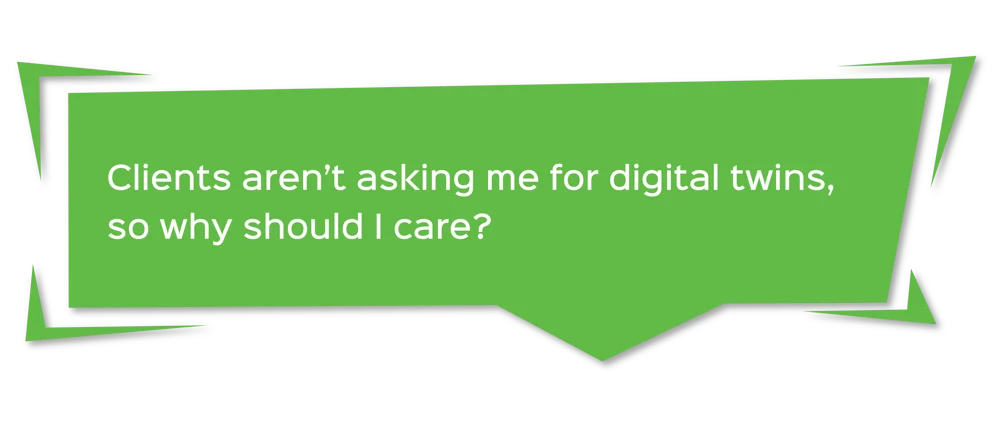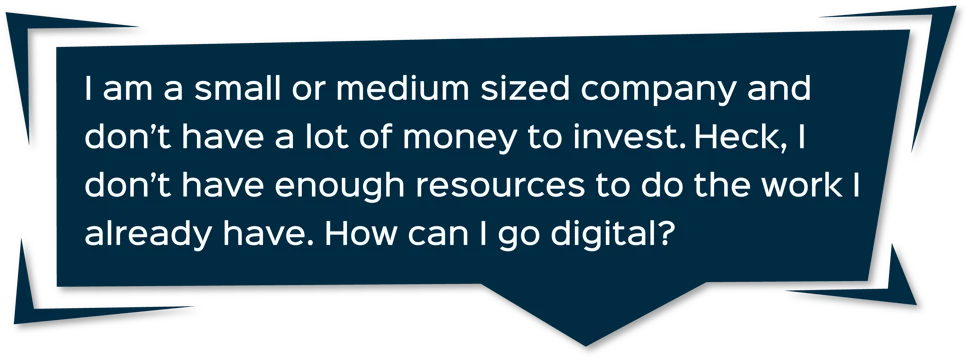
By Claire Rutkowski, Chief Innovation
Bentley Chief Innovation Officer, Claire Rutkowski, answers your questions about how to stay current in an ever-changing industry, while meeting both your business and client needs.

The short answer is digital transformation. By going digital, you will be able to do things more quickly and with higher quality, increasing your throughput and freeing up time for higher value activities. All of our Bentley software users are at different stages in their transformation. If you feel your company is relatively new to going digital, rather than focusing on going digital for the sake of it, I encourage you to think about how to streamline processes and find efficiencies.
The more you can automate and eliminate extra or redundant steps, the more time and budget you will free up for further digital training and investment. Start by identifying the areas in your workflow that slow down your organizations’ ability to deliver on your clients’ expectations. Notice any overlap between areas that both enhance your ability to produce and improve your ability to deliver on your clients’ needs. Ask what solutions could help you address any pain points and offer improvements you seek. A good example might be implementing component-based design. This allows you to reuse your best design components again and again, reducing design time and increasing the safety and quality of your finished product. Once the component library is built, you could increase your digital maturity by making all of the components parametric in nature, so they are scalable to all situations.

I am reminded of this quote from Henry Ford: “If I had asked people what they wanted, they would have told me a faster horse.” Without concrete experience and a solid framework for the implementation of digital twin, clients may not have the context to ask for digital twins in their project.
However, digital twins and the use of iModels on your projects will provide your clients with so many benefits, such as reduced construction costs, easier handover during commissioning, more effective operations, and lower cost maintenance. By adopting digital twins as your go-to solution, you have the chance to position your organization as an innovator in the industry and can demonstrate that you not only have your client’s best long-term interests at heart, but also that you aren’t an order taker but rather a thought leader and trusted advisor.
The more you can automate and eliminate extra or redundant steps, the more time and budget you will free up for further digital training and investment. Start by identifying the areas in your workflow that slow down your organizations’ ability to deliver on your clients’ expectations. Notice any overlap between areas that both enhance your ability to produce and improve your ability to deliver on your clients’ needs. Ask what solutions could help you address any pain points and offer improvements you seek. A good example might be implementing component-based design. This allows you to reuse your best design components again and again, reducing design time and increasing the safety and quality of your finished product. Once the component library is built, you could increase your digital maturity by making all of the components parametric in nature, so they are scalable to all situations.

If resources and finances are your primary block to going digital, the best place to start is focusing on efficiencies. Strategies such as reducing document versions, leveraging component-based design, applying automation, and creating process consistency will all save you time and free up your people to work on other projects. Examine your workflows and uncover places where investing in the move from 2D to 3D would improve efficiency, therefore saving money and resources. Once you get caught up on the work you already have, you will be able to use the money you are saving as seed money for other going digital investments.
In a previous Ask Bentley Anything, we explored in detail how organizations at different levels of digital maturity can go digital in a strategic and manageable way. For organizations who are concerned about resources, money, and primarily operate in 2D, I recommend reviewing the Tier 1 recommendations first.



